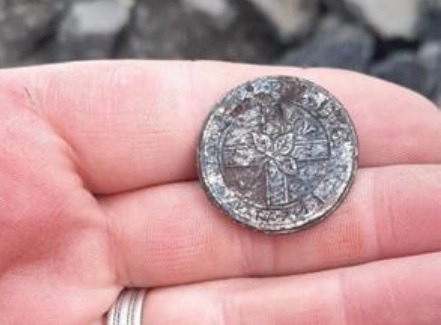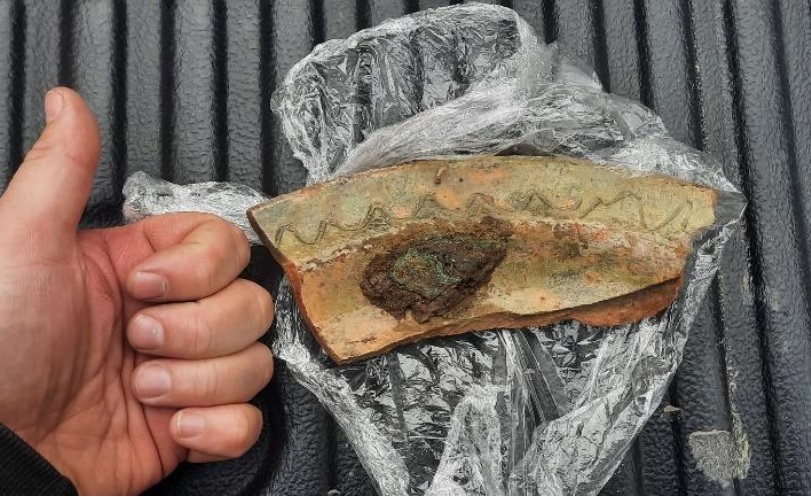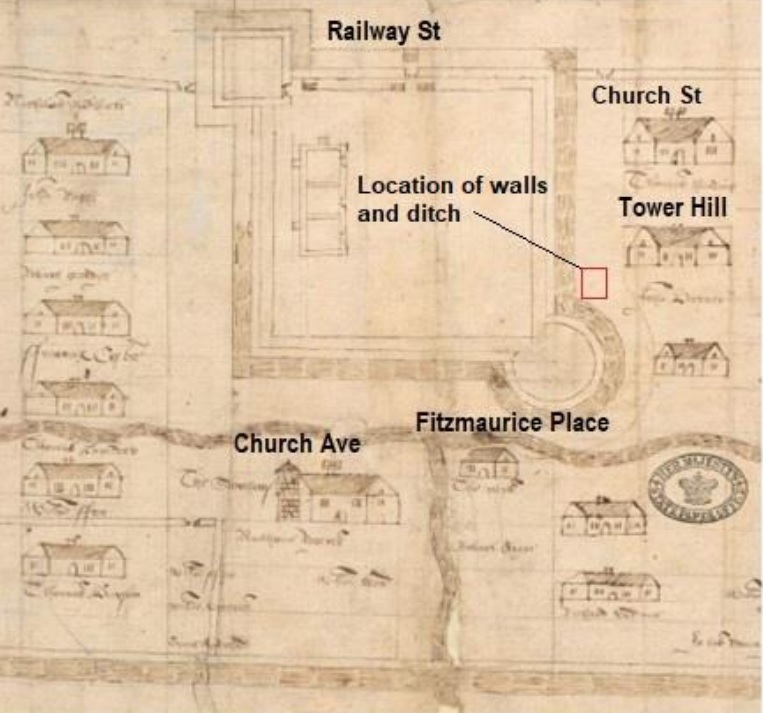
The historic English military and Tudor past of Portlaoise has been uncovered as a footpath is replaced in the town.
The Laois capital town dates back to the 16th century.
Work is underway by Laois Heritage and Laois County Council to preserve and enhance the stone walled military Fort Protector, including enhanced wide footpaths around its perimeter.
Digging has uncovered fascinating artifacts, including this button, photo by Laois archeologist Colm Flynn who is overseeing the historic side of the project. Colm explains more below.

"A filled in ditch cutting was also identified at the location of the walls. The ditch was identified immediately against the north wall of Fort Protector. The ditch had been backfilled with soil and stone. The ditch was likely an external ditch around the outer wall of Fort Protector and may date to the 16th century. Several artefacts were identified and recovered from the ditch fill, including post medieval pottery, animal bone, and a military uniform button.
"The button is a uniform button from the Fourth Royal Irish Dragoon Guards who were stationed in Portlaoise in the end of the 18th century, and mustered to crush the 1798 Rebellion. The button features St. Patricks Cross, and the shamrock, with the Roman Numerals ‘IV’ in the corner indicating the ‘Fourth’ of the regimental name. On the base of the button is the Latin regimental motto ‘Qui separabit’, which translates as ‘who will divide us’.

A 16th century green-glazed plate shard was also discovered in the excavation.
"The pottery sherd is from a domestic serving platter and dates to the 16th century. This platter or plate would have been used in one of the homes of the English settlers in Portlaoise," Colm said.
"Historic mapping (see 1560 map below) that survives for Portlaoise shows what the houses in the 16th century would have looked like. The houses would have been Tudor style, storey and a half buildings, with thatched roofs, and central hearths or chimneys," the archeologist said.
The ditch they were found in proves that Portlaoise is Ireland's first plantation town.
"The presence of roads on these maps at the location of the walls and ditch indicate that the walls and ditch predate the 18th century and based on their location and associated artefacts, date to the 16th century. The walls may represent the remains of one of the first settler homes of the Tudor Plantation of Laois and Offaly. The archaeological monitoring of works has afforded us the opportunity to identify and preserve nearly 500 year old archaeology, and to examine the unique heritage of Portlaoise, as Irelands first plantation town," the archeologist said.
Below: his annoted map of 16th century Portlaoise showing the location of the dig. The map dates to 1560.

Laois Heritage Officer is Catherine Casey.
"It was very exciting. It’s a fantastic opportunity to find out a little bit more about the layout and life in the late medieval town.
"What happens next is the archaeologist has to do a report on the excavation and all the finds. Then the material has to be conserved and deposited with the National Museum," she said.
The footpath works are part of a €680,000 upgrade of the streets near the town's 15th century Fort Protector. It includes new limestone footpaths, undergrounding of overhead wires, attractive street planting and new streetlighting. The work is to be completed in spring 2022.
Subscribe or register today to discover more from DonegalLive.ie
Buy the e-paper of the Donegal Democrat, Donegal People's Press, Donegal Post and Inish Times here for instant access to Donegal's premier news titles.
Keep up with the latest news from Donegal with our daily newsletter featuring the most important stories of the day delivered to your inbox every evening at 5pm.